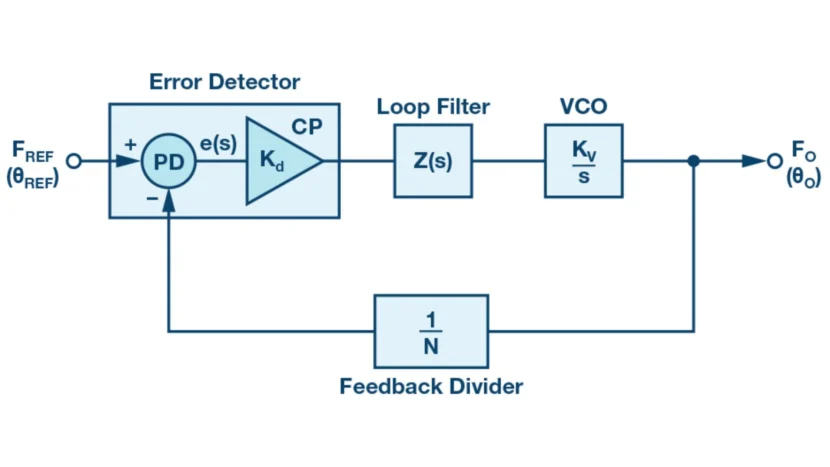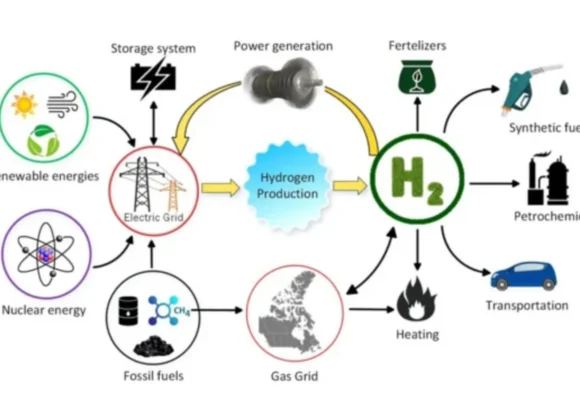In the world of electronics, the phase locked loop (PLL) is a powerful and versatile circuit that plays a crucial role in various applications. From telecommunications to radar systems, the PLL is a key component that helps to synchronize signals, generate stable frequencies, and much more. In this article, we will explore the ins and outs of the phase locked loop, its functionality, applications, and advantages.
What is a Phase Locked Loop?
A phase locked loop is a closed-loop feedback control system that generates an output signal whose phase is related to the phase of an input signal. It comprises a frequency divider, a voltage-controlled oscillator (VCO), a loop filter, and a phase detector. The phase detector compares the input and feedback signals, and the loop filter processes the phase error signal to control the VCO’s output frequency. The frequency divider divides the VCO’s output frequency to create the feedback signal for the phase detector.
How Does a Phase locked Loop Work?
The phase locked loop works by comparing the phase of the input signal with the phase of the feedback signal. If there is a phase difference, the phase detector generates an error signal that is fed to the loop filter. The loop filter processes the error signal and controls the VCO to adjust its output frequency. As a result, the output signal phase locks to the input signal phase, maintaining synchronization between the two signals.
Applications of Phase locked Loops
Phase locked loops are used in a wide range of applications across various industries. Some of the common applications include:
- Frequency Synthesis: PLLs are used to generate stable and accurate output frequencies for communication systems, radar systems, and test equipment.
- Clock Recovery: PLLs are used to recover clock signals from data streams in digital communication systems.
- Frequency Demodulation: PLLs are used to recover modulation signals from frequency-modulated signals in demodulation applications.
- Frequency Tracking: PLLs are used to track and lock onto a varying frequency signal in frequency tracking applications.
Advantages of Phase locked Loops
There are several advantages of using phase-locked loops in electronic circuits:
PLLs are perfect for producing precise and steady frequencies because of their exceptional frequency stability.
- Phase Synchronization: PLLs ensure phase synchronization between input and output signals, maintaining signal integrity.
- Frequency Agility: PLLs can quickly and accurately change their output frequency, making them versatile in dynamic frequency applications.
- Noise Rejection: PLLs are robust against noise and interference, ensuring reliable signal processing in noisy environments.
Conclusion
In conclusion, the phase locked loop is a crucial component in electronic circuits, providing synchronization, frequency stability, and signal integrity in various applications. Understanding the working principles, applications, and advantages of PLLs is essential for designing and implementing efficient electronic systems. With its versatility and reliability, the phase-locked loop continues to be a fundamental building block in modern electronics.
Its ability to lock onto and synchronize with an input signal, adjust frequency and phase, and maintain stability over time makes it indispensable in communication systems, data converters, clock generation, and numerous other applications where precise timing and synchronization are critical. Embracing the power of phase-locked loops opens up a world of possibilities for creating sophisticated and robust electronic devices that operate seamlessly in today’s interconnected and high-speed digital environment.
Learn about the functionality, applications, and advantages of phase locked loops in this comprehensive guide. Unlock the power of PLLs in electronic circuits!
FAQ’s
Q. What is a phase locked loop?
A control system that produces an output signal whose phase is correlated with the phase of an input signal is known as a phase-locked loop (PLL). It is a feedback system that automatically adjusts the phase of a locally generated signal to match the phase of an incoming signal. PLLs are commonly used in various electronic devices to synchronize and demodulate signals, recover timing information, reduce jitter, and generate stable clock signals. By locking onto the phase of an input signal, a PLL can track frequency variations and maintain a constant phase relationship between signals.
Overall, phase-locked loops play a vital role in modern communication systems, radar systems, frequency synthesizers, and other applications requiring precise frequency and phase synchronization
Q. What is the main function of phase locked loop
A phase locked loop (PLL) is a critical component in electronic circuits, with its main function being to synchronize the phase of an output signal with the phase of a reference signal. This synchronization is achieved by adjusting the frequency and phase of the output signal to match that of the reference signal. PLLs are commonly used in various applications such as frequency synthesis, clock and data recovery, demodulation, and frequency modulation. By locking onto the phase and frequency of the reference signal, PLLs ensure accurate and stable signal synchronization, making them essential in communication systems, audio equipment, and other electronic devices.
Q. What is the output of PLL?
The output of a Phase Locked Loop (PLL) is a signal whose frequency and phase are locked to the input signal. This means that the output frequency tracks the input frequency, allowing for frequency synthesis and signal generation. PLLs are commonly used in communication systems, clock generation circuits, and frequency demodulation. The output of a PLL is a stable and precise signal that is synchronized with the input signal, making it an essential component in many electronic devices. By locking onto the input signal, the PLL ensures accurate frequency and phase alignment, enabling reliable data transmission and signal processing.
Q. What is PLL structure?
A control system known as a Phase Locked Loop (PLL) produces an output signal whose phase is correlated with the phase of an input signal. Phase comparator, low-pass filter, and voltage-controlled oscillator (VCO) make up its three primary parts. The VCO generates an output signal whose frequency is proportional to the input signal, while the phase comparator compares the phase of the input and feedback signals.
The output signal’s high-frequency noise is eliminated by the low-pass filter.. PLL structures are widely used in applications such as clock recovery, frequency synthesis, and demodulation. They are essential in modern communication systems, where precise phase and frequency control is required for reliable signal transmission and reception.




